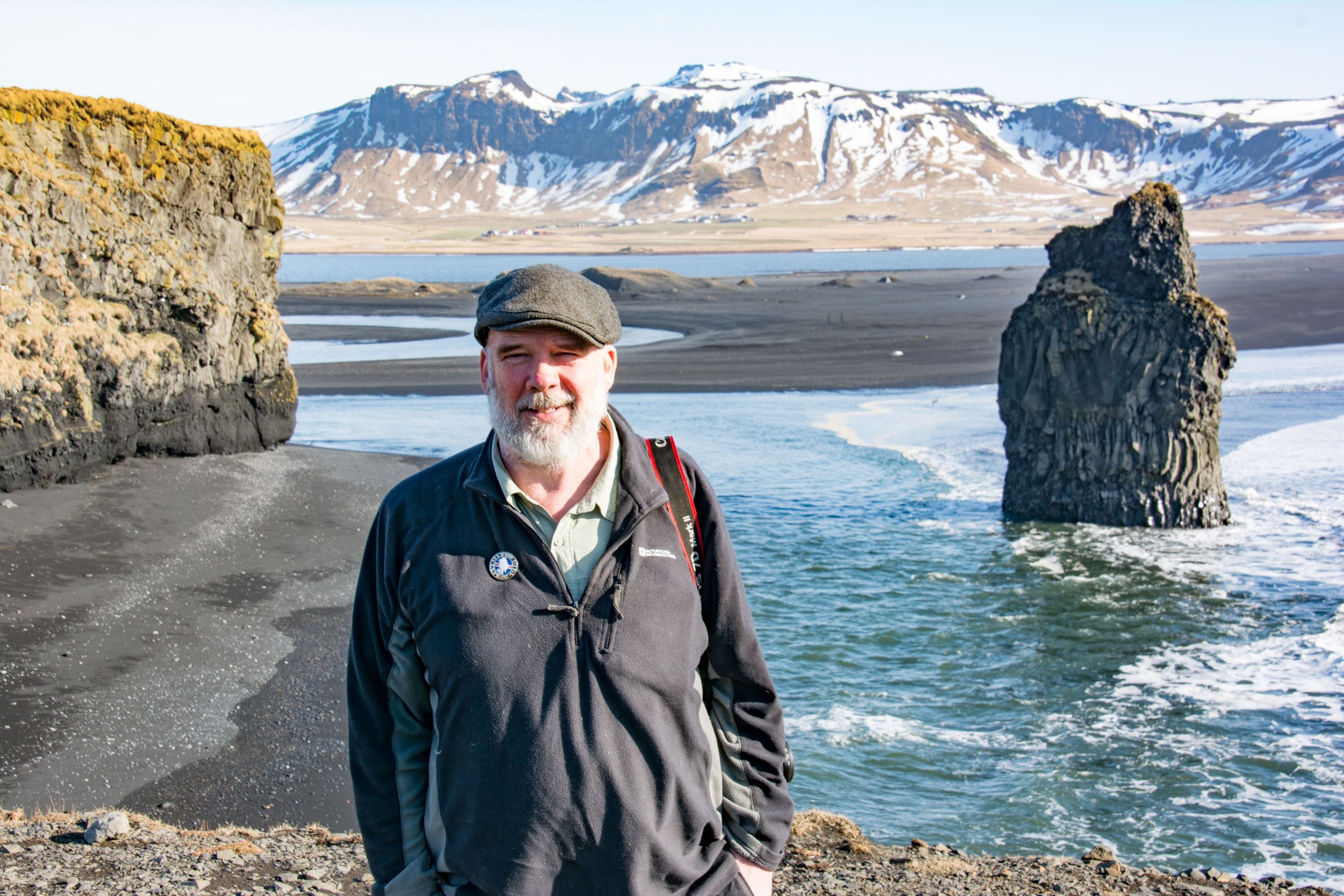Travel Guide to Reykjavík, Iceland - the World’s Northernmost Capital
Reykjavik, Iceland’s charming capital city, has quite a lot to offer, and being the only major urban center in the country, is a great place to experience Icelandic city life.
Set at the edge of Iceland’s icy wilderness, this is almost certain to be your first and last stop here, in between days spent exploring the stunning natural landscapes nearby and all around you. The mountains across the bay blend seamlessly into the city skyline, reminding everyone in the city, visitors and locals alike, of the immense nature on the city’s doorstep.
Home to most Iceland’s 400,000 residents, Reykjavik and its surrounding towns feel like one vibrant neighborhood. With the hardy and creative Icelanders mixed in with over 2 million visiting tourists every year, the city enjoys a lively, international atmosphere year-round and it’s becoming quite a cosmopolitan place.
This is a city where prim, colorful houses sit side by side with historic museums, art galleries, and buzzing bars. The creative spirit of Icelanders is on full display in Reykjavik, and whether you’re into history, culture, or food, Reykjavik has it in spades.
But at its core, this cutting-edge and easy-going capital acts as the ideal remedy after a long adventure through Iceland’s fiery and spectacular landscapes.
Table of Contents
See more of our Iceland articles:


Why visit
Reykjavik, the world’s northernmost capital, often surprises first-time visitors with its lively and cosmopolitan vibe. In recent decades it has transformed from a quiet outpost to a modern city brimming with world-class museums, thriving businesses, and a friendly, creative populace. Whether you’re an adventure seeker or a history buff, Reykjavik has you covered.
As the cultural heart of Iceland, Reykjavik offers a deep dive into the country’s Viking heritage. The first settlers arrived in the late 9th century, and from that moment, the country has lived through a long and unique history.
There’s a lot of information to cover, but with the fantastic National Museum accompanied by specific historical attractions like the Saga Museum and Settlement Exhibition, Reykjavik does it with ease.
The city is also a hub of modern culture and creativity. Reykjavik is well known for its art and music scenes, and across the city you’ll find plenty of galleries and live music to check out. Reykjavik’s nightlife is famous in Europe, with the downtown area jam-packed with fantastic bars, cocktail lounges, and clubs, all within walking distance of one another.
Finally, one of Reykjavik’s most unique features is its abundant geothermal energy. Volcanic activity underground provides abundant hot water to the capital, fueling the city's swimming pools and luxurious hot springs. Enjoying a soak is not only a great way to beat the cold weather, but it’s also intrinsic to Icelandic culture.
All these elements make Reykjavik an exceptional city break, perfectly complemented by the grand spectacle of Iceland’s nature on the city’s doorstep, with waterfalls, glaciers, volcanoes, and more just a short drive away.
Where is Reykjavik?
Reykjavik is located on the southwestern coast of Iceland, positioned along Faxaflói Bay. It’s about 25 miles from Keflavik International Airport, the main gateway into Iceland.
The location of Reykjavik means that it enjoys oceanic vistas and easy access to Iceland’s interior landscapes. This is a low-lying coastal area, with mountain ranges and lava fields on the outskirts of the city.
Surrounding Reykjavik are plenty of fantastic natural features. The Reykjanes Peninsula to the southwest (home to the international airport) is a volcanically active area, with fissures, lava fields, and volcanoes shaping the landscape.
Northeast of the city you’ll find the Golden Circle region, with lots of genteel countryside interspersed with powerful waterfalls, twisting canyons, and a pulsing geothermal area.
How to get here
Flying to Keflavik International Airport
Keflavik International Airport is the country’s largest airport, and where most flights will arrive to Iceland. It’s located about 25 miles southwest of Reykjavik, so after you arrive, you’ll either need to get the bus, a taxi, or pick up a rental car to get into the city.
The airport is very well connected. As the halfway point between Europe and North America, it has long been a popular layover spot for airlines, and so you can find plenty of direct flights to destinations in either direction.
Taking the bus from Keflavik Airport to Reykjavik
After landing, the most convenient way to get into Reykjavik is to get the Flybus or Airport Express shuttle service. A one-way ticket costs approximately $30 USD, with both companies offering frequent departures.
It takes about 45 minutes to arrive at the BSI Bus Station in Reykjavik where you’ll either walk into town (between 10 and 15 minutes to the center) or jump on a smaller shuttle that whisks you off to your hotel (which costs extra).
Taxis are also available from the airport but are more expensive, with fares typically ranging between $100 to $130 USD.
Driving to Reykjavik
If you choose to pick up a rental car or campervan at the airport, it’s an easy drive into Reykjavik along Route 41. The highway whisks you straight into town in about 45 minutes. This is the biggest highway in the country, built by the American military when they had a base in Keflavik.
If you're traveling from other parts of Iceland, Reykjavik is well-connected by road. The Ring Road (Route 1) is the major highway that circles Iceland, connecting the capital with the rest of the country.
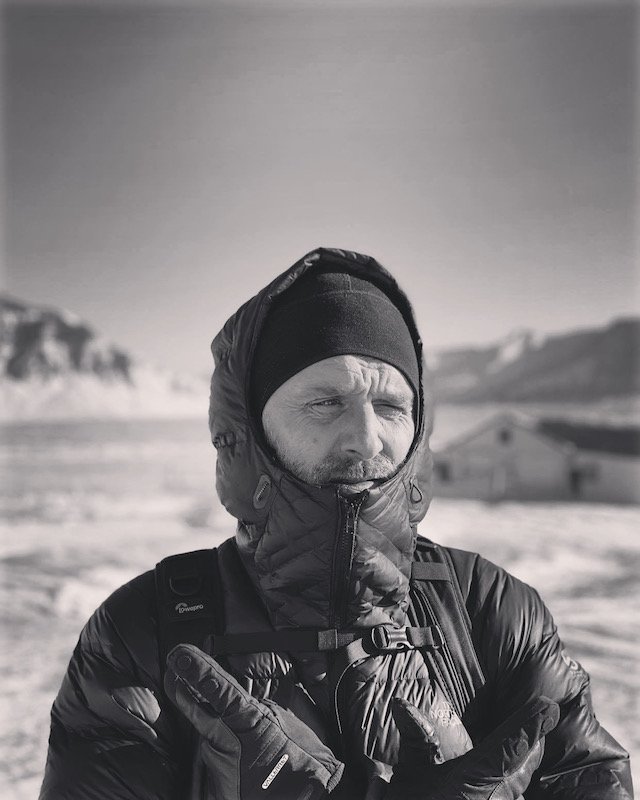
Connect with a local expert in Iceland for help perfecting your itinerary, answers to all your travel questions, and fabulous local tips for a better visit!
Best time to visit
The best time to visit Reykjavik is in May and June. This is at the very beginning of summer in the country, with long hours of daylight for exploring and mild temperatures.
However, there can still be one last snowstorm before the summer finally arrives, but in general, with low prices, less people, and all activities open for business, this is a great time to be in Iceland.
In May, average temperatures range from a high of 48 ºF (9 ºC) to a low of 37 ºF (3º C). June is slightly warmer, with average highs of 57 ºF (14 ºC) and lows of about 44 ºCF (7 ºC). There’s also less rain in May and June than in autumn.
Visiting in summer
Summer in Iceland is the busiest time in Reykjavik thanks to the mild and stable weather. July and August are very busy, with restaurants and hotels crowded throughout the capital area.
During this time there can still be storms that disrupt travel plans, but it’s not very common, and temperatures hover around 10 to 15°C.
Visiting in fall
Autumn in Iceland begins really at the end of August, although the true shoulder season doesn’t start until September. This is a season that’s great for enjoying the capital, with lower prices, fewer people, and the reappearance of the northern lights above.
However, you can expect lots of rainy days during this time unless you get lucky with one last bout of summer weather.
Visiting in winter
Winter in Reykjavik is essentially from November to the beginning of April, characterized by colder temperatures averaging around 30 to 39 °F and limited daylight, with only about 4-5 hours of sunlight per day.
This does mean that chances are high you’ll experience the magical Northern Lights, and winter also lets you delve into the ice caves underneath Vatnajökull. The average high temperature during winter is below 40 ºF.
How long to spend
You can easily get a handle on Reykjavik and its sights within two days. However, with one or two more, it also allows you some time to venture off into the nearby countryside – a must when visiting Reykjavik on a city break.
2 days - for the city center and immediate surroundings
Day 1: On your first day in Reykjavik, start by walking around the downtown area. That includes browsing the shops along the streets Laugavegur and Skólavörðustígur, visiting the Hallgrímskirkja Church, and then continuing to the waterfront to see the glittering Harpa Concert Hall and the Sólfarið sculpture. From here, it’s also a short walk to Reykjavik’s harbor, filled with fishing vessels.
After lunch, wander through the square Austurvöllur for a look at the Icelandic Parliament building and the National Church. Then, take your pick from the city’s world-class museums.
For history buffs, head to the Settlement Exhibition, showcasing the foundations of an unearthed Viking longhouse from the Settlement era.
Or for something more interactive, the Lava Show lets you see molten lava up close, and FlyOver Iceland is a ride-like simulation that sees you shooting across all of Iceland’s famous natural attractions and fantastical landscapes.
Day 2: On the morning of your second day, opt to do as the locals do and find your closest swimming pool for a dip. Or if you’re after something more luxurious, The Sky Lagoon is only a 15-minute drive from downtown in Kópavogur.
Then, head back into town to warm up with coffee and some cinnamon scrolls from the bakery Brau n Co, and pop into the outdoor Einar Jónsson Sculpture Museum.
For the afternoon, if you’re visiting between April and October, whale watching tours depart from the harbor and are a fantastic way to experience some local wildlife, and you’ll often see puffins as well.
If you’re visiting in the low season, odds are that the weather might be a bit grim, but luckily, The Wonders of Iceland exhibition in the Perlan building is world class, providing interactive exhibits about all of Iceland’s wonderous nature, from volcanic eruptions to sea cliffs to a replica of a natural ice cave.
Afterward, stroll around the city pond, Tjörnin, and pop into City Hall to admire the huge topographical map of Iceland.
3 or 4 days - time to add in some day trips
With one or two more days in Reykjavik, you’ll have plenty of time for day trips into the surrounding countryside. Here are two of my favorites:
Day 3: The Golden Circle, Iceland’s most famous day trip, is a route northeast of Reykjavik that stops by three famous sights. The first is Thingvellir National Park, the historic meeting place of Iceland’s first parliament back in the 10th century and where you can walk between the tectonic plates.
Then, the Geysir Geothermal Area, where the geysir named Strokkur erupts in a plume of water and steam every five minutes.
The third stop is the waterfall Gullfoss, thundering down a canyon at the very edge of the highlands, glaciers glinting in the distance.
Worthy additions to any day trip around the Golden Circle could be a lunch at Friðheimar Geothermal Tomato Farm, stopping by the volcanic crater called Kerið, or enjoying a soak at The Secret Lagoon hot spring.
Day 4: Snæfellsjökull National Park - A longer day trip from Reykjavik that’s great to do is to tour around the Snafellsnes Peninsula, stopping at the volcanic attractions that make up the Snæfellsjökull National Park.
The territory sits at the very tip of the peninsula, named for the glacier and volcano Snæfellsjökull, whose eruptions have molded the landscapes over millennia into what you see today.
There’s the twisted basalt coastline at Arnarstapi, and huge sea stacks made from lava at Lóndrangar. Then, moss-laden lava fields give way to black sand beaches, while inland, volcanic craters like Saxhóll and Rauðhóll mark the landscape.
On the northern coast of the peninsula, stop to snap a photo of the picturesque Kirkjufell Mountain before making the drive back to Reykjavik.
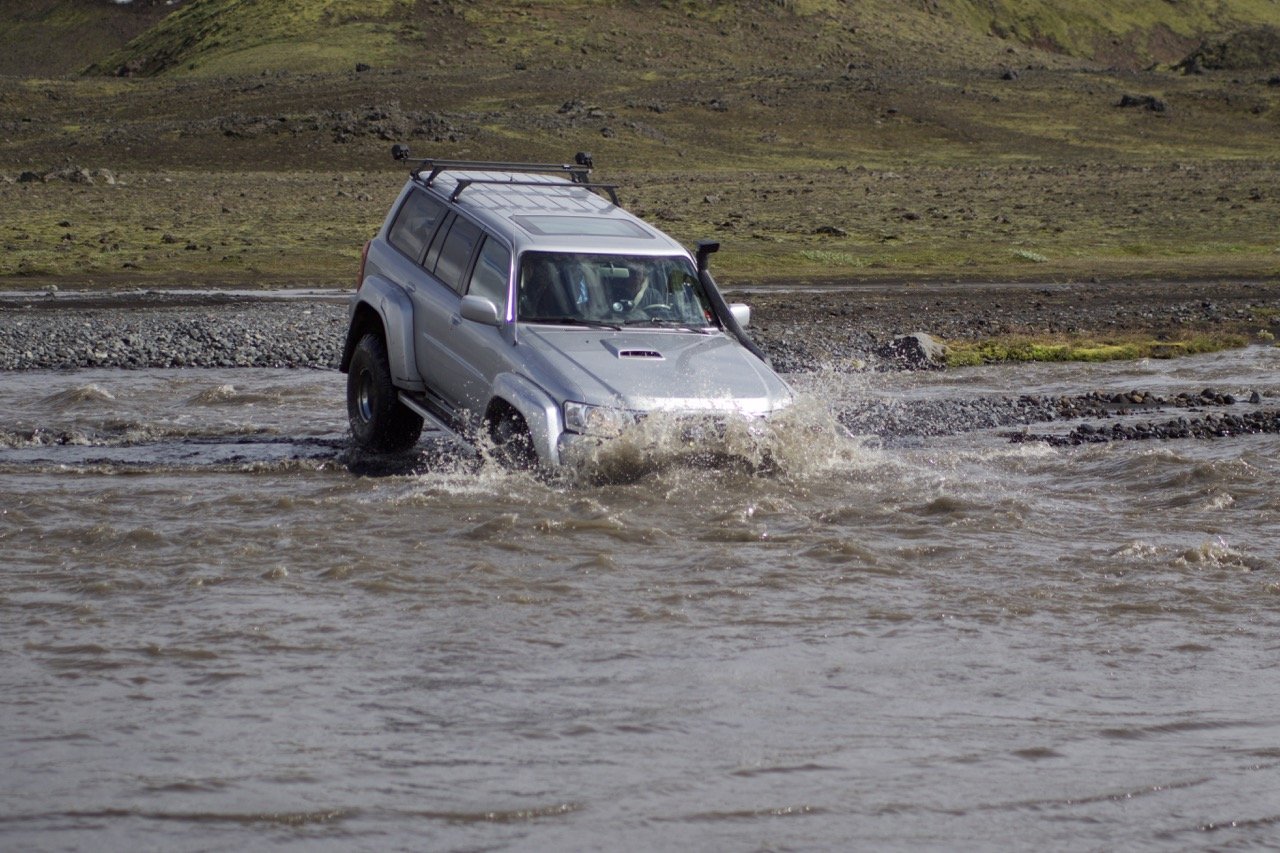
Where to stay
The view of central Reykjavik from Hallgrímskirkja. Photo: Olga Ernst, CC BY-SA 4.0, via Wikimedia Commons
Reykjavik has a compact city center and as long as you stay somewhere relatively central, you’ll likely be within walking distance of most of the major sights.
Considering that most visitors just stay here for a couple of days before moving on elsewhere in Iceland, it’s important to choose somewhere in the center of town so that your sightseeing is as efficient as possible.
There are more and more hotels every year now, especially as Iceland’s global popularity continues to grow, so there is a wide range of options.
Below are some of my recommended hotels in the city center:
Reykjavik Marina – Berjaya Iceland Hotels is one of the city’s longest-standing hotels, providing modern and comfortable rooms at a great price point in a great location by the old harbor.
Average prices for a night here hover between $200 to $300 USD per night.
Hotel Óðinsvé is also a great option, located on a quiet street in the residential area of downtown Reykjavik, just two minutes from Hallgrímskirkja. The interiors of this boutique hotel are classic Scandinavian-chic, with pared-back and tranquil rooms.
Depending on when you’ve visiting, prices range from around $190 to $300 USD per night.
Center Hotels are a chain of hotels that operate several different properties across downtown Reykjavik, all of them moderately priced.
Simple and stylish, prices depend on which one you choose, but expect to pay an average of $150 to $200 USD per night.
Kex Hostel is the best bet for a budget option that still gives you that distinctive Reykjavik atmosphere. This hostel is a favorite hang-out for locals on the weekend thanks to its great bar and restaurant, the walls covered with books, maps, and vintage bric-a-brac picked up from around Iceland.
There are private rooms and dorms available, and prices range between $40 and $250 USD.
Things to see & do
1. Hallgrímskirkja church
Hallgrímskirkja is Reykjavik's most iconic landmark, towering over the city with its striking, modernist design inspired by Iceland’s basalt landscapes. Completed in 1986, the church is named after the poet Hallgrímur Pétursson, one of the country’s national treasures who composed many famous works.
In contrast to the cathedrals of Europe, inside Hallgrímskirkja is stark and bare, although the large pipe organ is very impressive. However, it’s well-suited to Reykjavik as a city.
I recommend paying the admission fee for the tower, providing you with panoramic views over Reykjavik and the surrounding coastline.
2. Harpa Concert Hall
If there’s one building that represents Reykjavik’s modern, forward-thinking view, it’s Harpa Concert Hall. Perched on the waterfront, this award-winning piece of architecture has a glass façade of hexagonal panes, a shimmering reflection of the unique lighting conditions that play out over the capital.
Basalt columns also inspired this design, again underscoring the relationship Reykjavik has with the volcanic landscapes on its doorstep.
Harpa hosts a variety of events, from classical concerts to contemporary performances, and is home to the Iceland Symphony Orchestra and the Icelandic Opera. The venue also features an elegant café and gift shop, and visitors are free to wander around inside to admire the views across the bay of Mt. Esja.
3. The Sun Voyager
The Sun Voyager (Sólfarið) is a striking steel sculpture located on Reykjavik’s scenic waterfront. Resembling a Viking ship, the sculpture symbolizes the promise of undiscovered territory, freedom, and hope, relating to the Vikings as they set out from Norway to find a new home.
The sculpture is especially beautiful during golden hour, or when there’s a fiery sunrise or sunset. It’s a popular spot for photos with uninterrupted views across the sea toward the mountains.
4. National Museum of Iceland
The National Museum of Iceland offers a comprehensive journey through the country’s history, all the way from the Viking Age to the modern era. Located near the University of Iceland, the museum’s exhibits include artifacts, photographs, and interactive displays that bring Iceland’s rich cultural heritage to life.
Highlights include a medieval church door from the Settlement Era and the exhibition on the famed Egils Saga exhibition.
5. The Wonders of Iceland exhibition at the Perlan
The Perlan, also known as "The Pearl," is one of Reykjavik’s more unique landmarks. This glass dome built on top of six geothermal water tanks used to be the place that provided hot water to the whole capital – now, it’s home to one of the best museums in the capital.
Wonders of Iceland showcases Iceland’s natural wonders, including a man-made ice cave, interactive exhibits on the glaciers. volcanoes, sea life, and birds, and a planetarium that plays an immersive showing of the northern lights in 8K.
Then, the observation deck takes in wonderful views over Reykjavik, and there’s even a zip-line that whisks you into the surrounding forest.
6. Whale watching tours
Reykjavik’s location by the sea makes it an excellent starting point for whale watching tours. Boats depart from the old harbor year-round, offering opportunities to see various species such as minke whales, humpbacks, and occasionally orcas and blue whales.
Tours typically last around three hours and include knowledgeable guides who provide insights into the marine life and ecosystem of the North Atlantic. While they do operate year-round, you’ll have a better chance to see more whales from the end of April until early October.
7. Visit a swimming pool or a hot spring
Iceland is blessed with an abundance of natural hot water, and bathing in the geothermal waters has been a huge part of Icelandic culture since settlement. You can do as the locals do and visit one of the local swimming pools for a soak, where you’ll find large pools as well as several hot tubs of varying temperatures.
Closest to downtown is Sundhöllin, one of Reykjavik’s oldest pools, while Laugardalslaug or Vesturbæjarlaug are both great options, although around a 20-minute walk from downtown.
For something a bit more upscale, The Sky Lagoon in Kópavogur (about a 10-minute drive from downtown) is one of the country’s most luxurious hot springs, an infinity pool overlooking the ocean and a famed 7-step ritual that involves a cold plunge, steam bath, and mineral mud washes.
Sky Lagoon
8. Reykjavik Art Museum
The Reykjavik Art Museum is made up of three different locations: Hafnarhús, Kjarvalsstaðir, and Ásmundarsafn. Each site offers a different perspective on Icelandic and international art, from contemporary pieces at Hafnarhús to the works of Jóhannes S. Kjarval at Kjarvalsstaðir, and the sculptures of Ásmundur Sveinsson at Ásmundarsafn.
The museum is also the frequent host of exhibitions and workshops, making it a great spot for art-lovers to visit.
9. Tjörnin pond & City Hall
Tjörnin is Reykjavik’s central pond, a quiet body of water in the heart of the city filled with ducks, swans, and seagulls. Surrounding Tjornin are easy-going walking trails and some quiet green spaces that are popular spots to gather on mild days.
In winter, the pond freezes over, and is used for ice skating and even games of cricket.
The nearby Reykjavik City Hall is also worth stopping by for a look at the large 3D topographical map of Iceland, letting you study any potential routes or plans you have for exploring the rest of the country.
Photo: Adrian Simons, Adde® at sv/en wikipedia, CC BY-SA 2.5, via Wikimedia Commons
10. The Settlement exhibition
For history buffs and fans of Viking culture, The Settlement Exhibition is must-see. This museum centers around the foundations of a Viking longhouse from the settlement age, unearthed when a hotel began renovations in their basement.
It’s a remarkable look at how the first settlers lived in Iceland, with a panoramic screen providing a view of what the countryside would have looked like at the time and others providing information about the Viking arrival.
11. Experience Iceland’s nightlife
The last recommendation for things to do in Reykjavik is to dive into its vibrant nightlife scene. Renowned throughout Europe, the city offers an eclectic variety of bars, pubs, and clubs, ensuring there's something for everyone.
Whether you're into live music, DJ sets, or dancing the night away, Reykjavik has it all. Plus, you can indulge in the city's renowned craft beers and inventive cocktails. In the summer, the perpetual daylight lends a unique and magical vibe to the nights, making it an experience you'll never want to end.
12. Take a day trip to the Golden Circle
A day trip along the Golden Circle is a must for visitors to Reykjavik. This popular route includes Thingvellir National Park, where you can walk between the North American and Eurasian tectonic plates, the Geysir geothermal area, home to the erupting Strokkur geyser, and the magnificent Gullfoss waterfall.
Each site is stunning, offering a glimpse into Iceland’s geological wonders.
Gulfoss

Connect with an Iceland local expert for help perfecting your itinerary, answers to all your travel questions, and fabulous local tips for a better visit!
Restaurants & dining
Reykjavik's culinary scene has evolved dramatically over the past few decades. Once known primarily for its traditional dishes, the city now boasts a vibrant and diverse food culture thanks to the New Nordic movement and its growing emphasis on local, sustainable ingredients.
The influx of immigrants has also left a mark on Reykjavik’s foodie scene; where once you could only get fish or lamb, today you can find everything from Mexican tacos to world-class sushi to Middle Eastern cuisine.
Traditional Icelandic cuisine is rooted in the country’s harsh climate and isolation, which historically required preserving food through methods like drying, smoking, and fermenting.
Recommended Restaurants
Fine Dining
Dill Restaurant: Iceland’s first Michelin-starred restaurant, known for its innovative use of local ingredients and Nordic culinary techniques. Expect dishes like fermented vegetables, smoked trout, and reindeer moss.
Mid-Range Restaurants
Fiskmarkaðurinn (The Fish Market): A fusion restaurant offering fresh seafood prepared with Asian and Icelandic influences. Try the tasting menu for a culinary journey through the best the sea has to offer.
Snaps Bistro: A cozy spot serving French-inspired cuisine with Icelandic twists. Popular for its brunch and dinner menus, featuring dishes like moules frites and lamb shank.
Sæta Svínið Gastropub: Located in a historic house on the corner of the square Ingólfstorg, this gastropub is a big crowd-pleaser, with hamburgers, fish, lamb, and plenty of other pub staples alongside a popular karaoke night.
Budget
Bæjarins Beztu Pylsur: Reykjavik’s legendary hot dog stand, where the hot dogs are made from a mix of lamb, beef, and pork. Toppings include crispy onions, raw onions, ketchup, sweet mustard, and remoulade.
Noodle Station: Known for its comforting bowls of noodle soup, a perfect budget-friendly option, especially on a windy Icelandic day.
Brauð & Co: A Reykjavik institution, Brauð & Co are famed for their delicious cinnamon scrolls and fresh, sourdough bread.
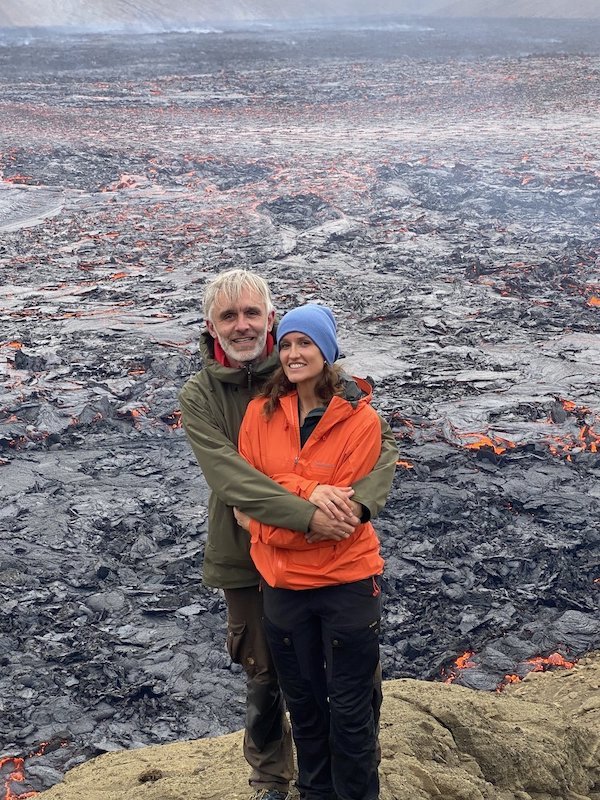

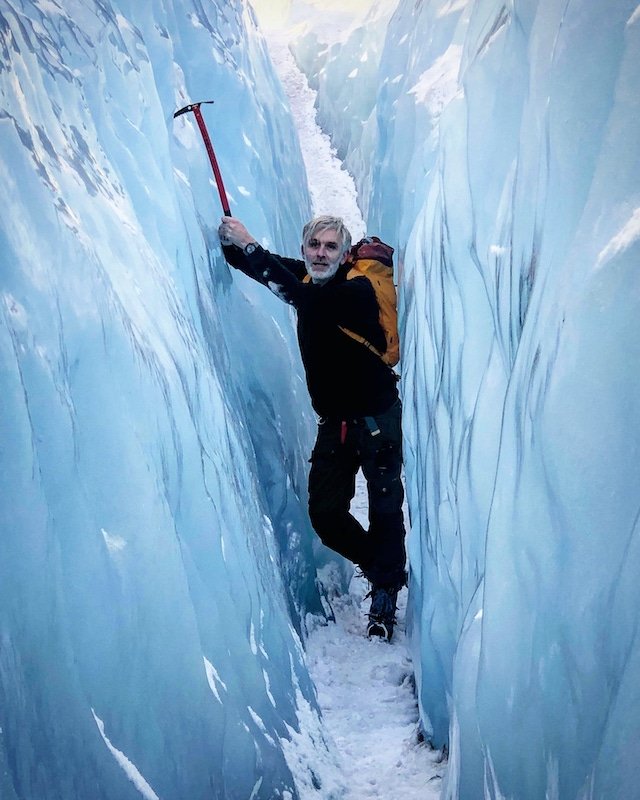


Connect with an Iceland expert!





